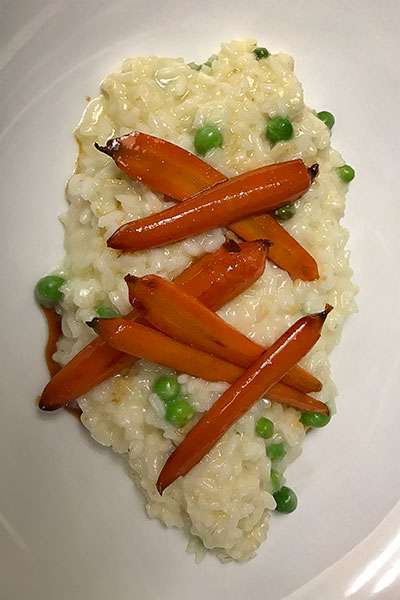Arborio Rice and the Perfect Rissoto
Everyone knows risotto as the self-saucing Italian rice dish with the notoriously tedious-to-prepare reputation. In the pan of an experienced chef, it can be masterfully transformed into a hearty comfort food or a delicate treat filled with the fresh flavors of the season. However, if you are unfamiliar with its tendencies, it can be stodgy, thick, and heavy.
 What is perfect risotto? First off, it should be saucy in texture. A perfect plate of risotto should flow like lava if you tilt the plate. Spoon it onto a hot dish (and you must use a hot dish), and it should slowly spread out until it forms a perfectly level disk. Sticky, tacky -or worse - gluey, are words that should never enter your head when eating it.
What is perfect risotto? First off, it should be saucy in texture. A perfect plate of risotto should flow like lava if you tilt the plate. Spoon it onto a hot dish (and you must use a hot dish), and it should slowly spread out until it forms a perfectly level disk. Sticky, tacky -or worse - gluey, are words that should never enter your head when eating it.
Arborio rice is named after a town in the Piedmont and Lombardy regions of northwest Italy. It is the most popular rice used in risotto in the United States. There are also domestic varieties, grown primarily in California.
Arborio is a short grain white rice, sometimes found brown. Its short, plump grains contain more starch than most other rice varieties, which makes it ideal for starchy rice dishes like risotto. It is also well suited for dishes where the rice must retain a shape, like with sushi.
Arborio’s pearly appearance and short, fat grains are ideally prepared and served slightly al dente, creamy on the outside yet still firm inside. At Capriccio, we sometimes grind it into a flour to add to dishes that require a creamy consistency.
Rice contains two molecules that make up its starch content - amylose and amylopectin. Most risottos start with a form of rice high in amylopectin. Rices with a higher proportion of amylopectin to amylose will tend to soften more completely and thicken their sauce more strongly.
There are dozens of cultivars of short-grained rice used in Italy, but here in the United States you're likely to see only three types that'll work for risotto - Arborio, Carnaroli and Vialone Nano. Arborio is the most common rice of choice. With almost zero amylose, it has a tendency to create a very thick sauce.
At Capriccio, our talented chefs take great pride in deftly arriving at that exact ratio of amylose to amylopectin that results in that perfect texture of rice and its delicious, creamy sauce. We invite you to enjoy.

